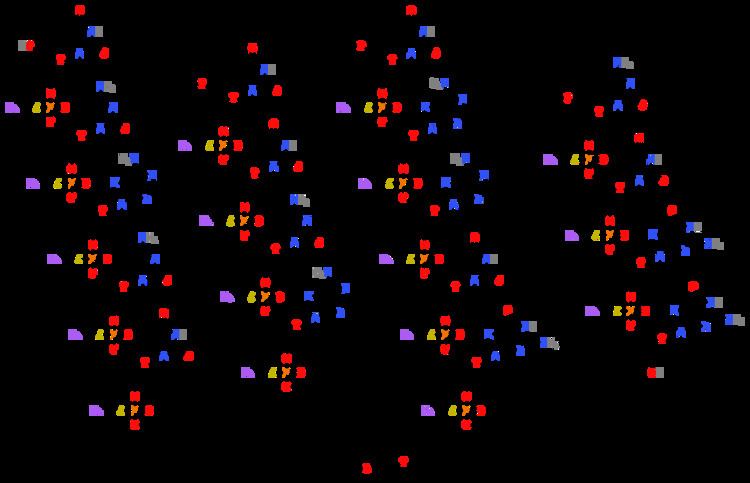Trade names Spinraza Legal status US: ℞-only | ATC code None | |
 | ||
Metabolism Synonyms IONIS-SMNRx, ISIS-SMNRx | ||
Cameron harding nusinersen progress update nov 2016
Nusinersen (INN), marketed as Spinraza, is the first drug approved by the U.S. Food and Drug Administration for use in treating spinal muscular atrophy (SMA), a rare neuromuscular disorder. It is a biologic drug that binds to mutated RNA.
Contents
- Cameron harding nusinersen progress update nov 2016
- Medical use
- Side effects
- Pharmacology
- Chemistry
- History
- Society and culture
- References
Medical use
The drug is used to treat spinal muscular atrophy associated with a mutation in the SMN1 gene. It is administered directly to the central nervous system (CNS) using intrathecal injection.
In clinical trials, the drug halted the disease progression. In around 60% of infants affected by type 1 spinal muscular atrophy, the drug also significantly improved motor function.
Side effects
Like other antisense drugs, there is a risk of abnormalities in blood clotting and a reduction in platelets as well as a risk of kidney damage.
In clinical trials, people treated with nusinersen had an increased risk of upper and lower respiratory infections and congestion, ear infections, constipation, aspiration, teething, and scoliosis. One infant in a clinical trial had severe lowering of salt levels and several had rashes. There is a risk that growth of infants and children might be stunted. In older clinical trial subjects, the most common adverse events were headache, back pain, and adverse effects from the spinal injection.
Some people may develop antibodies against the drug; as of December 2016 it was unclear what effect this might have on efficacy or safety.
Pharmacology
Spinal muscular atrophy is caused by loss-of-function mutations in the SMN1 gene which codes for survival motor neuron (SMN) protein. Patients survive owing to low amounts of the SMN protein produced from the SMN2 gene. Nusinersen modulates alternate splicing of the SMN2 gene, functionally converting it into SMN1 gene, thus increasing the level of SMN protein in the CNS.
The drug distributes to CNS and to peripheral tissues.
The half-life is estimated to be 135 to 177 days in CSF and 63 to 87 days in blood plasma. The drug is metabolized via exonuclease (3’- and 5’)-mediated hydrolysis and does not interact with CYP450 enzymes. The primary route of elimination is likely by urinary excretion for nusinersen and its metabolites.
Chemistry
Nusinersen is an antisense oligonucleotide in which the 2’-hydroxy groups of the ribofuranosyl rings are replaced with 2’-O-2-methoxyethyl groups and the phosphate linkages are replaced with phosphorothioate linkages.
History
Nusinersen was discovered in a collaboration between Adrian Krainer at Cold Spring Harbor Laboratory and Ionis Pharmaceuticals (formerly called Isis Pharmaceuticals). The collaboration began in June 2004 when CSHL Research Investigator Dr. Yimin Hua joined Krainer lab to start this project. Partial work was done at University of Massachusetts funded by Cure SMA.
Starting in 2012, Ionis partnered with Biogen on development and in 2015 Biogen acquired an exclusive license to the drug for a US$75 million license fee, milestone payments up to US$150 million, and tiered royalties thereafter; Biogen also paid the costs of development subsequent to taking the license. The license to Biogen included licenses to intellectual property that Ionis had acquired from Cold Spring Harbor Laboratory and University of Massachusetts.
In November 2016, the new drug application was accepted under the FDA's priority review process on the strength of the Phase III trial and the unmet need, and was also accepted for review at the European Medicines Agency at that time. It was approved by the FDA in December 2016 as the first drug for SMA.
Society and culture
Nusinersen has orphan drug designation in the United States and the European Union.
According to the New York Times, Spinraza "will be among the most expensive drugs in the world", with an estimated cost US$750,000 in the first year of treatment and "about US$375,000 annually after that."
